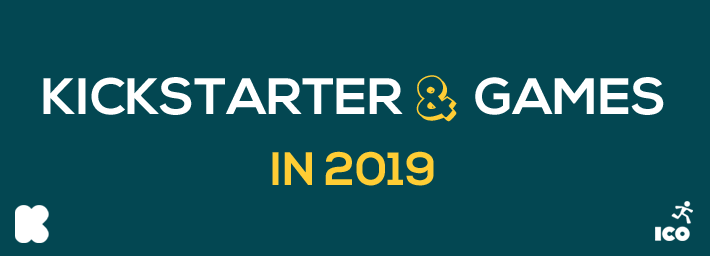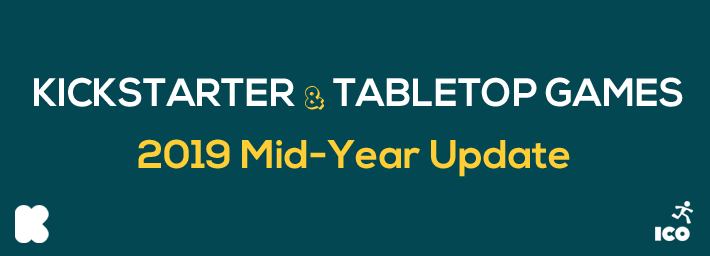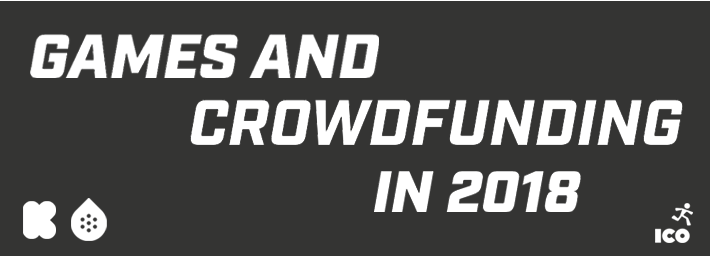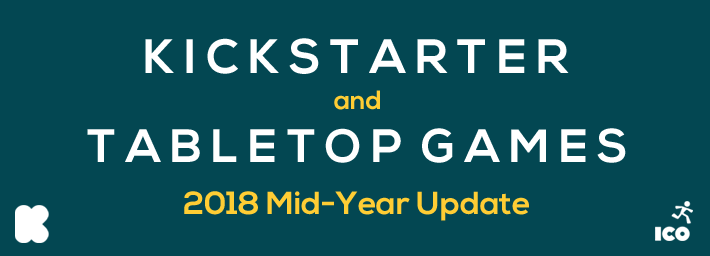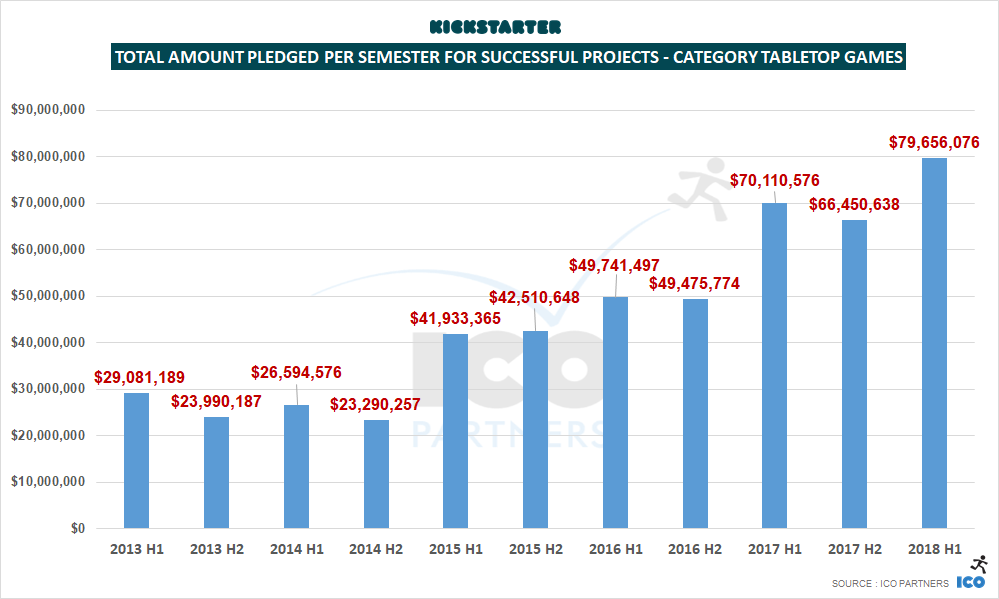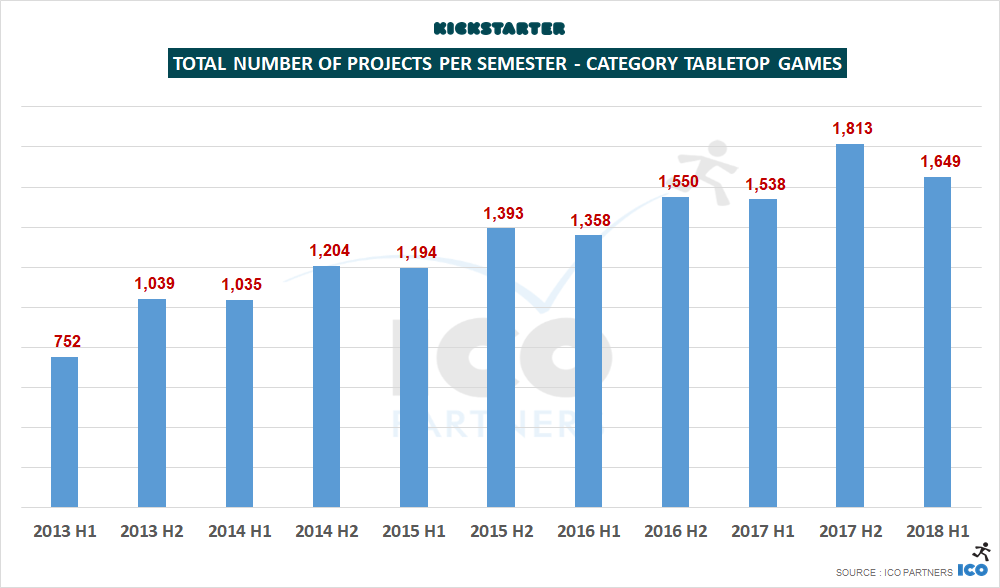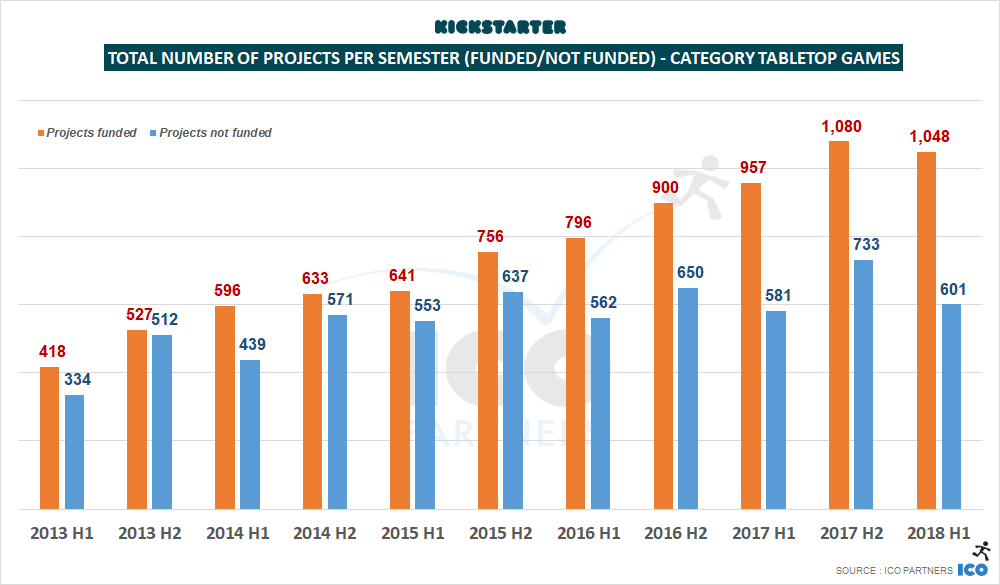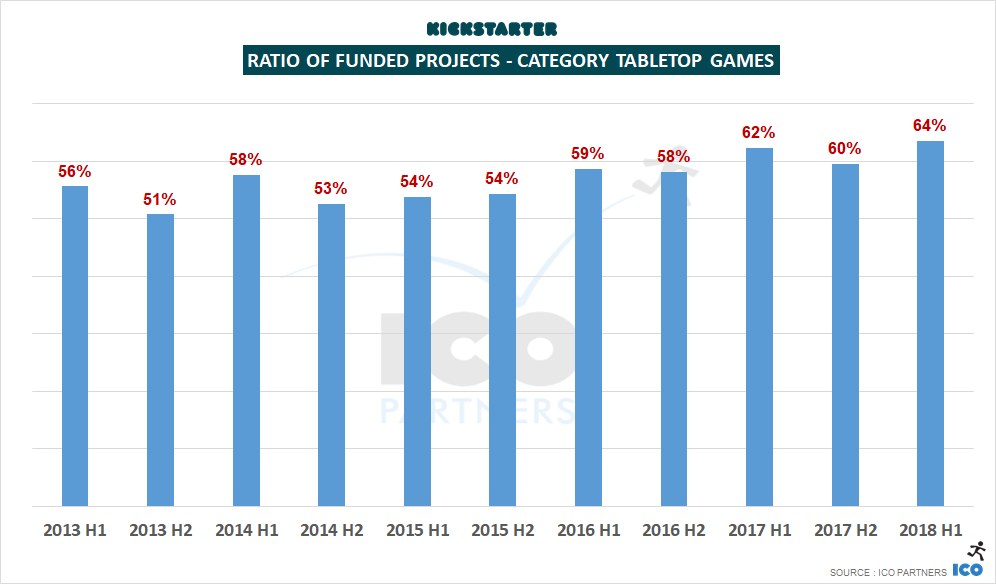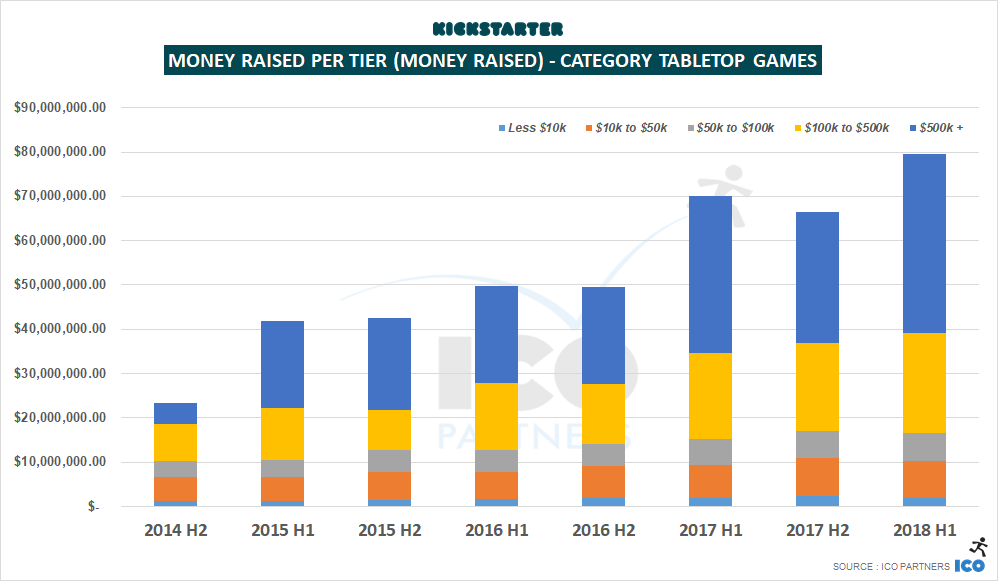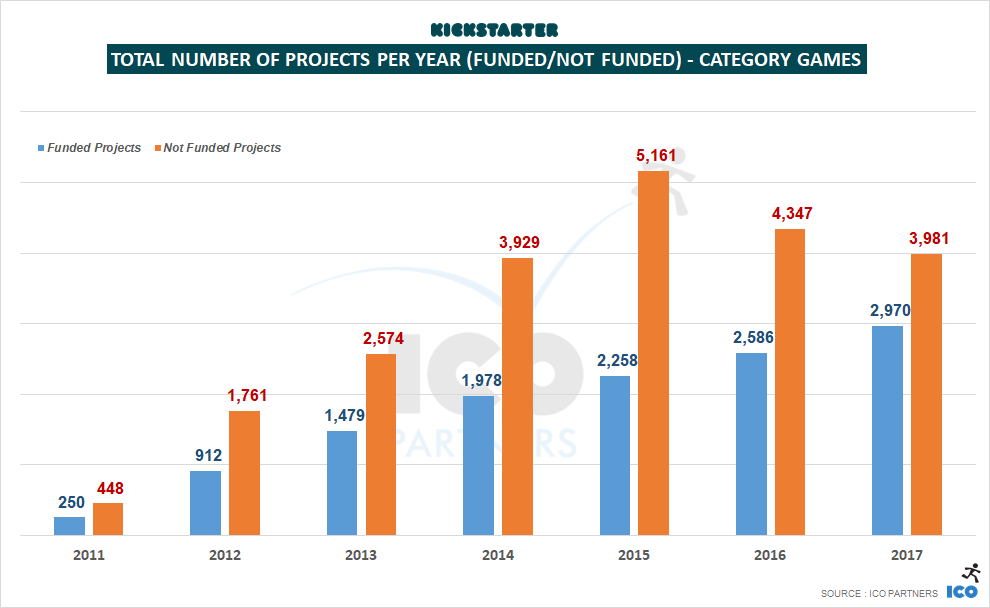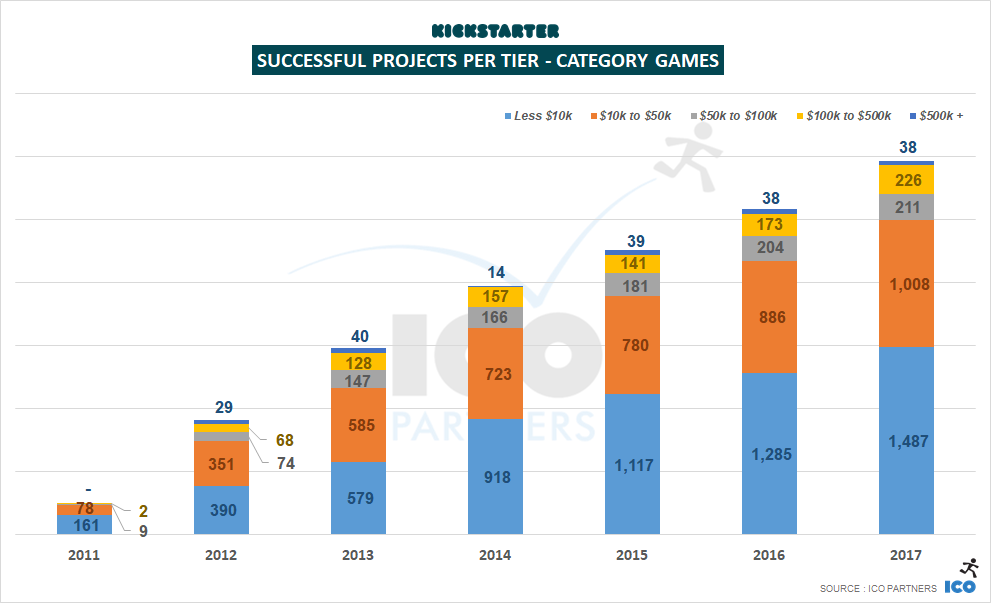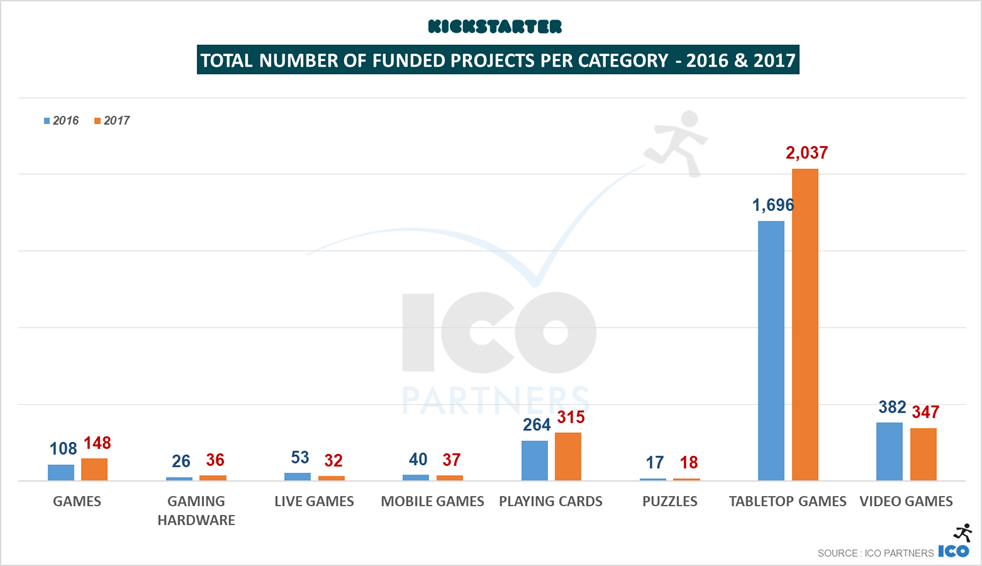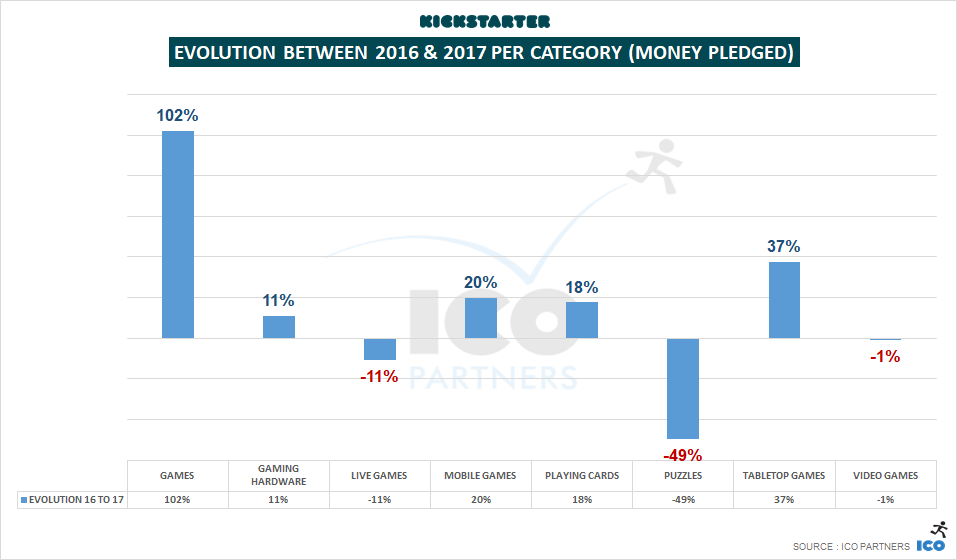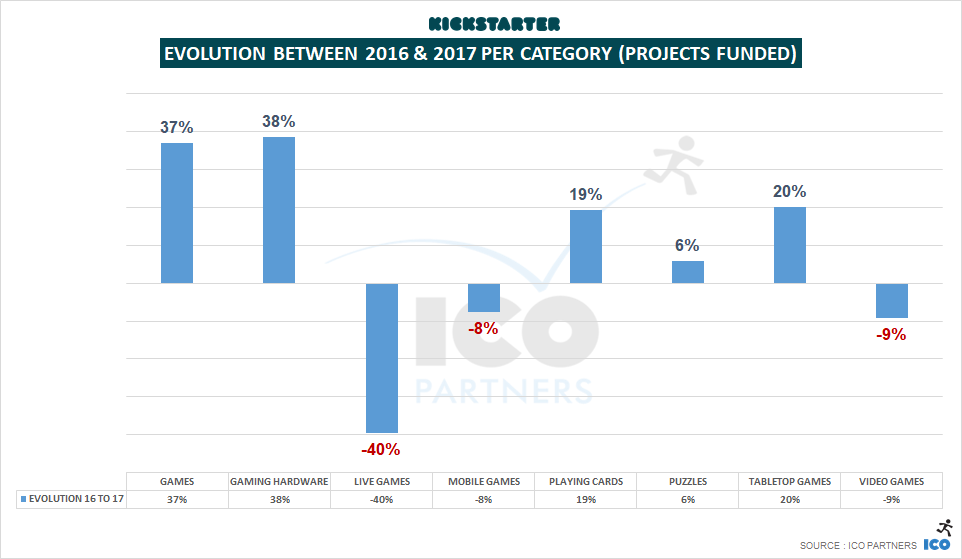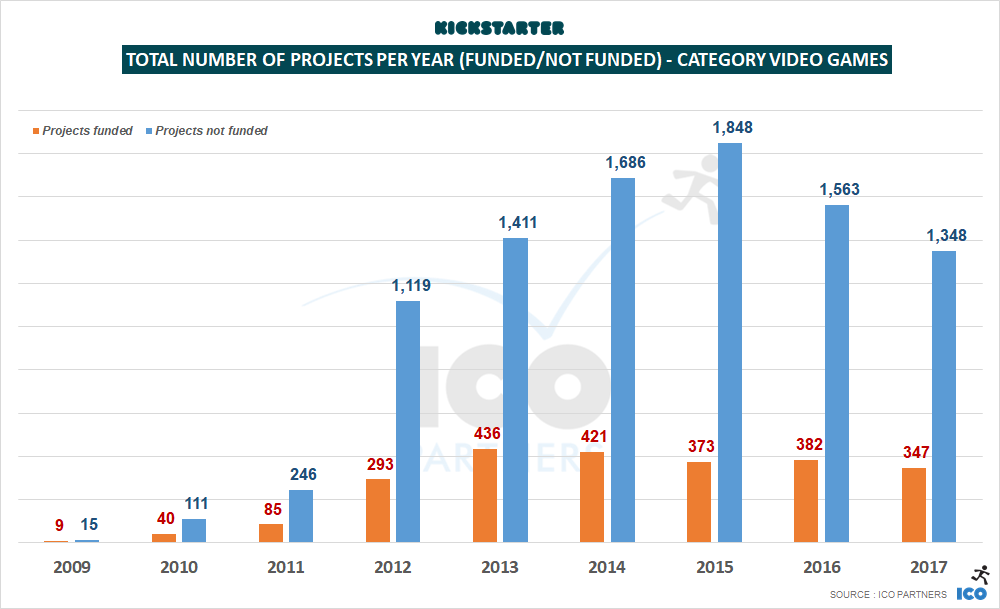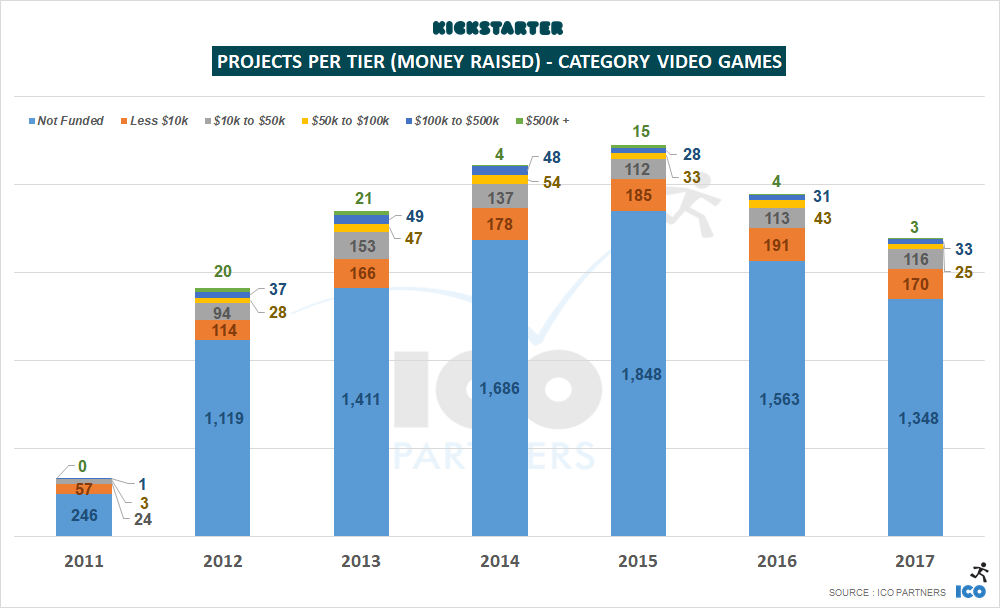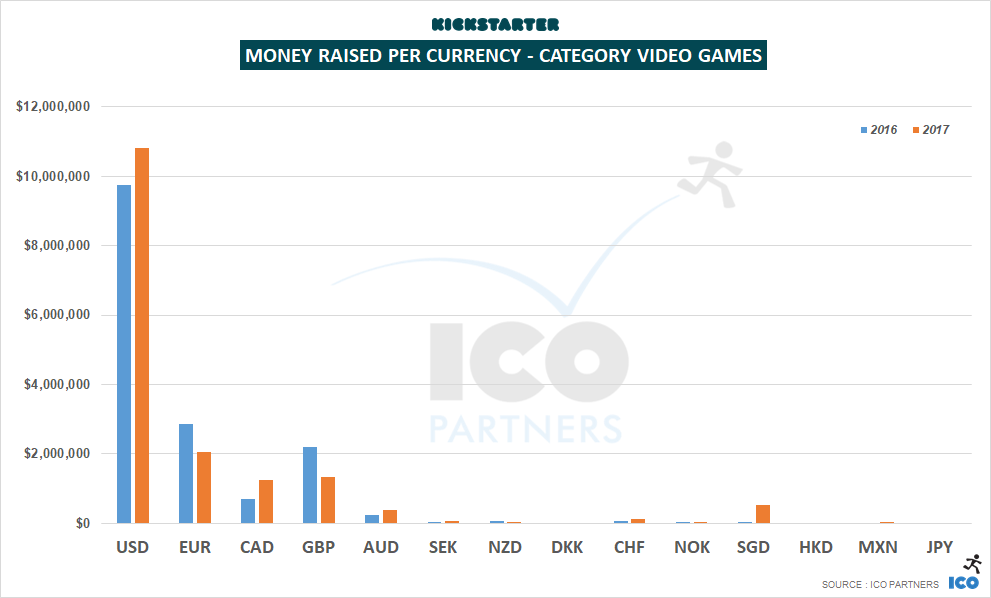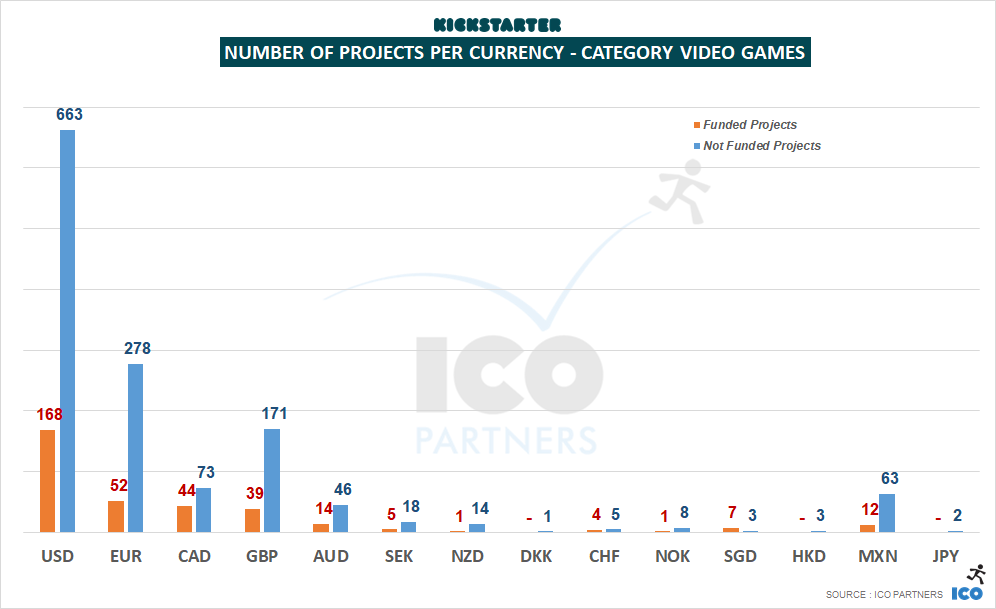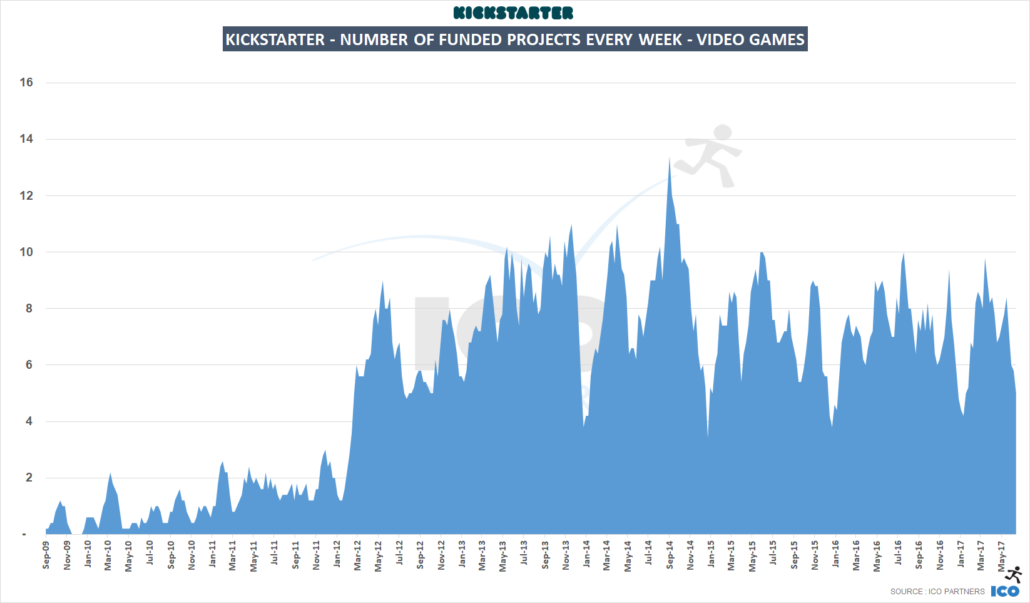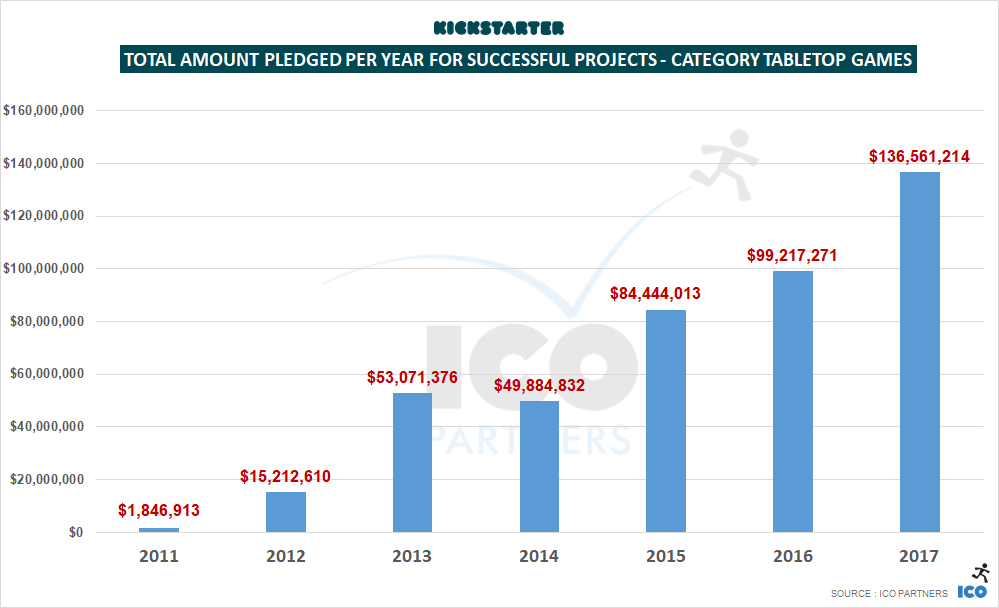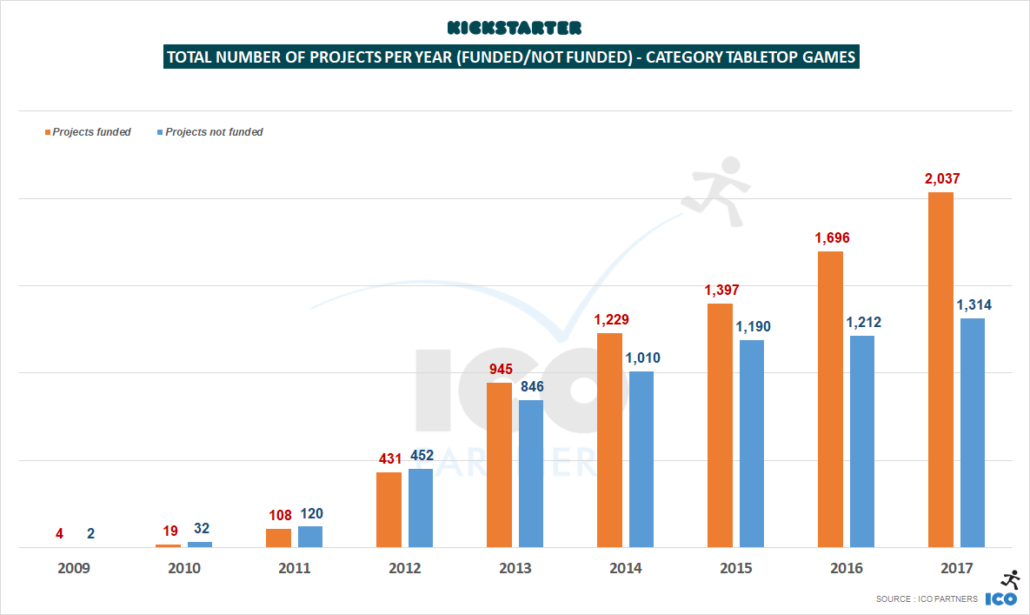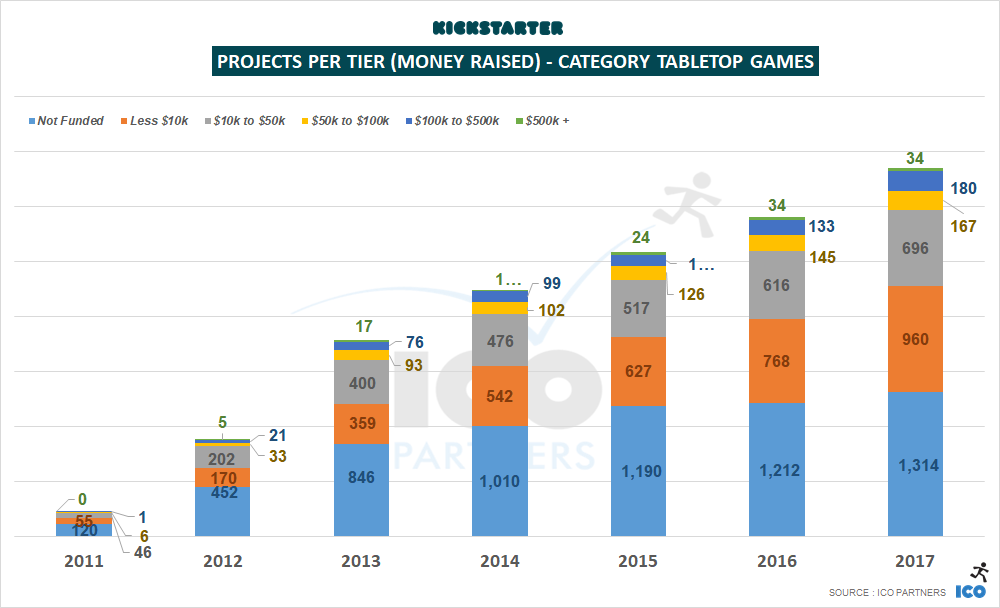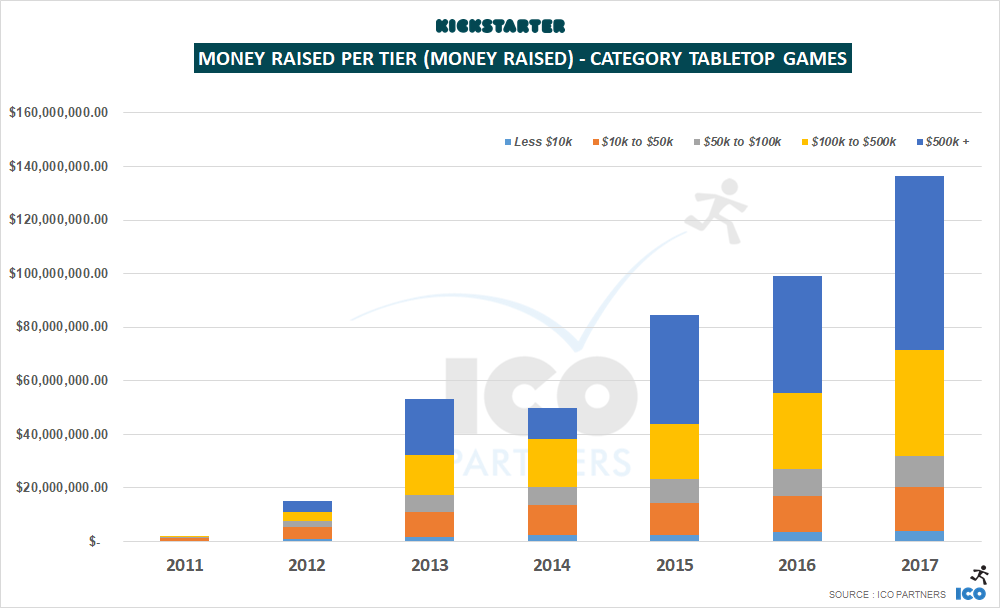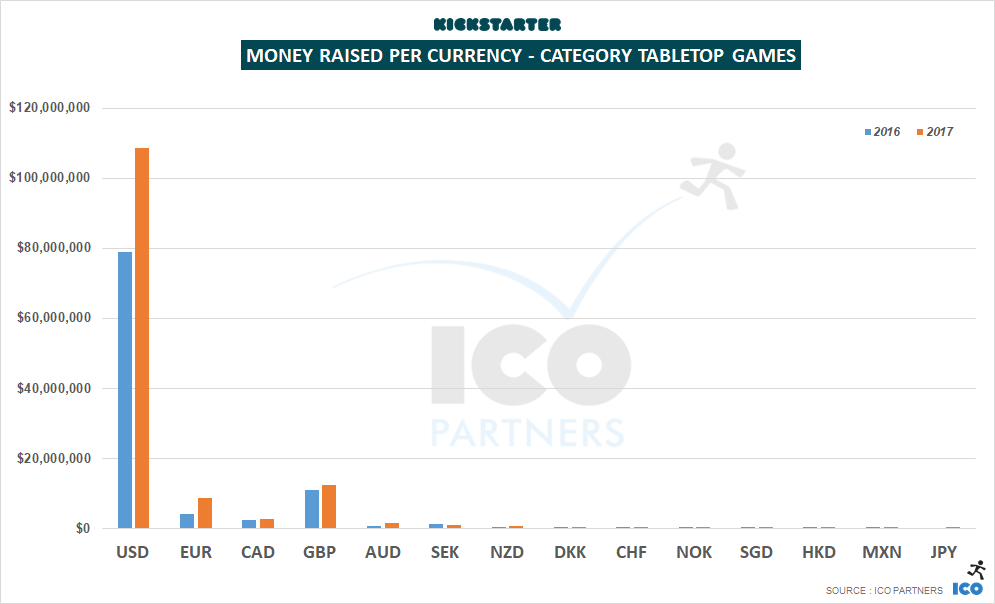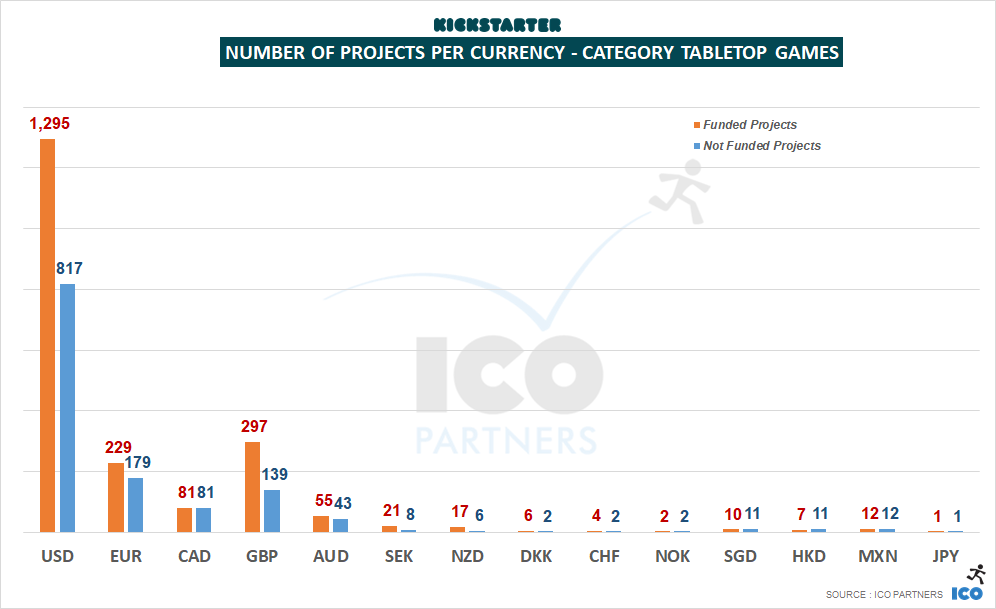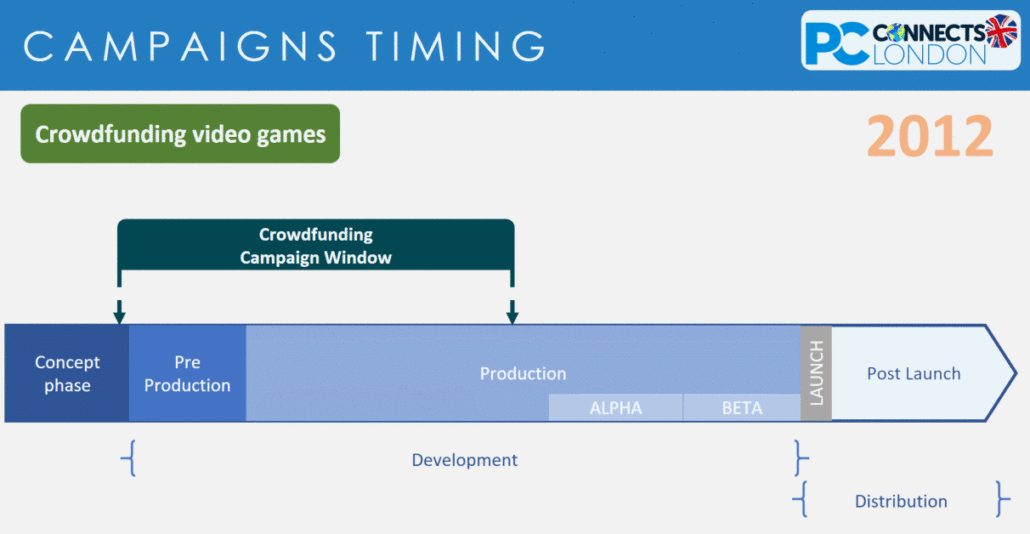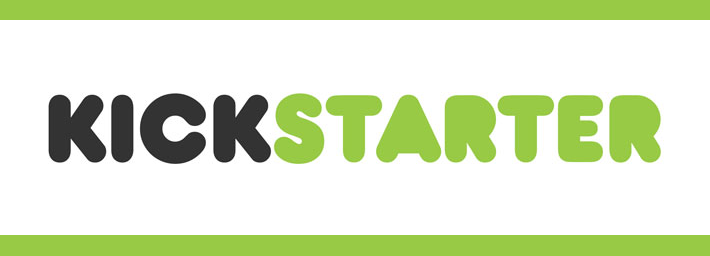A year has passed and it is time again to look at how the Kickstarter landscape for games has evolved over the past 12 months. Read more
Posts
Following up from yesterday’s blog post, you can find here the status for tabletop games on Kickstarter for the first half of 2019. Read more
Welcome to my yearly blog post on crowdfunding and games, looking at how well games have performed on Kickstarter (and Fig) for the past year. Read more
As an addition to the traditional mid-year crowdfunding check, for video games, I have decided to give tabletop games their own blog post this year. There is a dedicated interest for these numbers, and they are quite fascinating to follow.
As a quick catch-up, you might want to have a look at the post on the year 2017 performance for games on Kickstarter.
The Kings of Kickstarter
Let’s get started with the question I always get when talking about the ongoing performance of the tabletop category on Kickstarter: is the bubble bursting yet?
Well. Nope.
And it’s hard to say if it is indeed a bubble at all, considering how steady the growth has been.
Tabletop games have almost raised $80m in just 6 months this year.
Tabletop Games have raised more money than any other category on the platform during the period, and represent 30% of all the money raised on Kickstarter.
As a reminder, Tabletop Games were representing 23% of all the money raised on Kickstarter in the year 2017, and if there is a trend in seasonality we can see, it is that the second half of a year is usually bigger for projects of that subcategory.
I normally don’t use gifs in blog posts, I feel this warrants an exception.

Looking into the total number of campaigns launched on the platform, we can see a drop from the previous period.
However, this is in line with previous years, which see fewer campaigns during the first half of a year.
Looking at projects that got funded, we can also observe a drop where there has been a constant growth for the past five years. This is the first sign of either some fatigue, or maybe we have reached the critical mass of unique, quality tabletop projects that can be submitted in a given period. There has to be a ceiling on how many of these projects can exist.
What is important to note as well, though, is that the number of projects that failed has dropped by a higher ratio than the number of funded projects. Like for the video games projects, this shows a decrease in the number of projects going to the platform unprepared, or the drop of purely opportunistic projects. (Remember the potato salad effect? This might be the tail end of it.)
Despite a drop in the total number of projects that got funded, we end up with the highest “success ratio” for tabletop games ever.
Almost two thirds of the tabletop campaigns manage to reach their goal.
Looking at which tiers see a drop in the number of funded projects, we see a similar pattern to the video games update, with lower tiers suffering a drop in numbers:
- There are more projects raising more than $50,000 than ever before.
- 32 projects raised more than $500,000 in the first six months of 2018. That’s 13 more projects than the previous best semester.
Looking into the amount of money raised per tiers, we can observe a few more things:
- Unsurprisingly, with more funded projects in higher tiers, they have raised record amounts for all tiers above $50,000.
- Also notable is that all the projects in those $50,000+ tiers have raised more on average than any semesters before.
- Projects that raised more than $500,000 amount to a total of $40m raised this past semester. That’s half of all the money raised by tabletop projects, and 15% of all the money raised on Kickstarter during this period.
Other Platforms
I have had a very cursory look at other crowdfunding platforms, especially Ulule, Game On Tabletop, and Indiegogo, that all have tabletop games projects submitted to them on a regular basis. I have not been able to include them in this analysis though – the amount of time it would require to parse their projects, as they are not using the same categories as Kickstarter, was too significant in comparison to their relative size to Kickstarter. It would also require to filter projects that are reported in these platforms when they were in fact funded on Kickstarter and the platforms are used for Slacker/Late Backers campaigns or for pledge management.
Kickstarter is where most of the funding happens, and the overall trends can be taken from its numbers.
Concluding Words
The bubble is not bursting. If anything, there are signs of reaching a stable critical mass for tabletop projects. What is a more important take away to me is that games are now the cornerstone of Kickstarter, despite having very few features in place specifically to support them.
The Games category, taken as a whole, represents more than a third of all the money pledged to Kickstarter so far in 2018. It might be strategic for the platform to consider looking into building on that strength, or it will be leaving open this opportunity to one of the competing platforms.
As is the tradition, this is the follow-up from the overall Kickstarter annual review from last week, with a focus on the Games category. Again, I will talk about Kickstarter, but I shared some insight on crowdfunding across different platforms for video games in a piece on PC Games Insider.
Games category now leading on Kickstarter
We talked about it last week, but that’s a notable change from 2016. Games represented 26% of all the money pledged in 2017, and 15% of all the funded projects.
There are two very important things to notice here.
First, the overall money raised by Games projects saw a significant bump in 2017. Secondly, the total number of Games projects that tried their luck on the platform has stayed roughly the same, at just under 7,000 campaigns total, but more of them achieved their funding targets in 2017, compared to the previous year.
We can consider that the platform has reached a better maturity point, where the projects trying to get funded having a better sense of what is required to meet their funding goal. There were 15% more Games projects funded in 2017, compared to 2016.
More money was raised all projects tiers. The top-tier, $500k+ projects represent a lot of the total money raised, of course – there was $70m raised by these projects alone. But the number of projects successfully raising between $100k and $500K is also up on previous years, representing about a third of all the money raised in 2017.
The number of projects in the top tier didn’t move from its 2016 figure – 38 Games projects raised more than $500k in 2017, the same number as the year before. A few very large projects represented a lot of the money raised. Notably, the record breaking Kingdom Death Monster 1.5, that became the #1 project in the Games category, raising $12.4m, and The 7th Continent, that raised $7m on its own. Together, these two campaigns represent more than 12% of all the money raised in the Games category, in 2017. And it is no surprise that they are both tabletop games project, and both of them are sequels/reprints of already successful Kickstarter projects.
Looking at the subcategories, the number of funded projects for video games has dropped a bit from 2016. There are a few more Playing Cards projects and generic Games projects funded. But more significantly, the number of Tabletop Games projects has grown significantly, up 18% from 2016.
And of course, almost all of the growth in the total amount of money raised by Games projects is fed by the Tabletop Games subcategory.
A look at the minor subcategories
- Games. This catch-all subcategory, meant to cover any project that the existing labels don’t properly represent, doubled in size in 2017, both in total number of funded projects and total amount of money raised. It is still a relatively small total, as it only covers those odd projects with an identity that’s hard to define, but it ought to be mentioned. To understand what this kind of projects these are, I give you the top two projects of 2017, both “golf” related: Chip-Down: Golf for the Non-Golfer and Beer Pong Golf : Golf Spieth Can’t Master
- Gaming Hardware. We saw more hardware projects getting funded in 2017, but none of them was a mega hit. It is still worth noting than more projects passed the $100k bar than last year (five in 2017, compared to only one in 2016). And if you are curious, the largest project of the category was The Dreamcade Replay retro console.
- Live Games. A niche subcategory, it has declined a bit in 2017, for the first time since its addition. One project passed the $100k mark for the first time for the subcategory. However, it’s a little bit at odds with the kind of projects you usually find there, and would probably be more at home beside the two previously mentioned golf titles in the Games subcategory. Take a look at CHIPPO: The New Golf Game for Beach, Backyard & Tailgate.
- Mobile Games. A regular piece of advice I give to people is to not crowdfund mobile games, so I am quite biased when it comes to analysing this category. In 2017, it passed the $500,000 in total funding raised. That’s probably the equivalent of one day of Supercell’s marketing budget for Clash of Clans. There are still about 37 projects that got funded, about 10% of all the projects submitted, way below the average for games’ projects. One project raised more than $100k, Epic Digital Card Game, but it happens to be a port of a very successful tabletop game.
- Playing Cards. The third-largest subcategory, it saw some growth in 2017 both in terms of the total amount of money raised (+21%) and the number of projects that were successfully funded (+19%). Very noteworthy as well, is the fact this is the first year we’ve seen a Playing Cards category project raising more than $500k – The Name of the Wind Art Deck raised $630,000.
- Puzzles. The smallest of all the Games subcategories, it had 17 projects funded in 2016, and 18 projects funded in 2017. The total amount of money raised was less than half the amount from 2016, but with so few projects, big variances are to be expected.
And now, looking at the two big subcategories.
A stable year for Video Games
With slight growth in the total amount of money raised, and a slight decline in the total number of projects funded, 2017 doesn’t appear to be exceptional one way or another for video games on Kickstarter.
There are a few things worth noting, though:
- The total number of video games projects submitted to Kickstarter is rising faster than the number of funded projects is declining. It means the ratio of funded projects is going up.
- This is the first time we see a decline in the number of funded projects in the Less than $10,000 raised tier. The other tier that sees a decline is the $50k to $100k tier. So, notable changes in 2017 seemed to occur within more the very small, hobbyist projects, as well as the projects raising between $50,000 and $100,000. For all the other tiers, there were a similar number of funded projects across 2016 and 2017.
My theory for the decline of the smallest tier is that fewer creators are trying to crowdfund their projects, and it directly affects that range more than the others. Kickstarter doesn’t have the visibility it had in the media, and it doesn’t come up as often as it used to as a viable platform for small projects.
2017 was mostly a better year for video games projects launched in USD and CAD. A higher proportion of projects in those currencies got funded than those in EUR and GBP.
I found it interesting to see that 12 video games projects launched from Mexico got funded, even if that represents a small total amount in the end. Also notable is the absence of projects launched through the Japanese version of the portal, especially considering how some of the biggest crowdfunded video games of all time originate from there. Kickstarter’s September 2017 launch in Japan looks like a flop so far, and the video game category seems to be the best illustration of that.
Tabletop Games: The Kings of Kickstarter
These two graphs tells the most significant story of 2017’s figures.
Tabletop Games have constantly grown over the past few years, both in terms of the total amount of money raised, and the number of projects funded. After a record year in 2016, the subcategory grew again, by +36% in 2017. The number of funded projects grew by +20%.
The growth invites questions, though. Will the subcategory stabilize? Will it crash? Can it keep growing?
There is no indication that its upward momentum will slow down anytime soon, even if record-breaking campaigns make it that much harder to keep up with the total amounts raised over a given year.
All the indicators for the subcategory are really healthy at the moment.
There has been growth across all tiers. This is, for me, a very important factor in determining how healthy the environment is, within this subcategory. If it were only good for the large, massive campaigns, it would not be a good sign; but having projects across all tiers growing shows that the ecosystem is not built upon a couple of metaphorical black swans, painting an inaccurate interpretation of the picture.
Projects across currencies are also finding success. Even if projects in USD represent the vast majority of the money raised and of the number of funded projects, projects in EUR and GBP are also healthy, representing more than 25% of the total funded projects.
This is especially interesting when you see campaigns that know that they will perform very well deciding to launch in USD, regardless of where they are based geographically. For example, 7th Continent, from a Paris-based company, launched their project in USD rather than in EUR.
Concluding thoughts
Last week, at the PC Connects in London, I delivered a presentation about the state of crowdfunding in video games. One point I made was the fact that Early Access is a much bigger competitor to Kickstarter than any other platform. One reason for this is the fact that, over the last year, the optimal window to launch a crowdfunding campaign for a video game has moved closer and closer to its ultimate launch. This is how I illustrated this (you need to click the image to see the gif in action):
What is very interesting is that, for tabletop games, that window has moved as well. Projects need to be more and more polished to get funded, but physical production means that the optimal window cannot move any further to the right.
The other important difference between video games and tabletop games is the fact that, for the latter, Kickstarter is the end solution for distribution for most projects. Whereas for video games, the end solution is Steam – Kickstarter helps a bit, but you still need to go to Steam.
So if your game in Alpha or Beta has a lot of appeal and replayability already, the chances are that when it is good enough to be showed on Kickstarter, it is also good enough to launch in Early Access. It is a lot less hassle, as you only have to concern yourself with the end game distribution platform. Early Access, however, doesn’t provide a lot of the perks that crowdfunding does – building the community, the opportunity to test your publishing skills, and building awareness – but I suspect to many studios, this is secondary, or underestimated.
What is also true, and a strong trend, is that many video games projects on Kickstarter are games that, by their nature, don’t have a lot of replayability (like, say, Point-and-Click adventure games) or immediate accessibility and audience appeal, making Early Access a path they cannot take.
All the Slides
A note on the methodology
Like for all previous blog posts on the topic, we have been using the data on the Kickstarter pages themselves (with the help of Potion of Wit) and the collection method is not without its own issues. Please consider all of the numbers presented here as estimates.
As promised last week, here is a deep dive into the Games category on Kickstarter for the year 2016. The format will follow the same as the article I did last year on the same topic. Please bear in mind that I will exclusively look at Kickstarter, and not any other crowdfunding platform here. For a more general outlook, specifically on video games, you can read my guest article on GamesIndustry.biz.
As usual, at the end of the article you can find more graphs in the dedicated SlideShare presentation.
The whole Games category
As seen last week, like most categories on Kickstarter, Games saw a decline in 2016 in money raised compared to 2015 (-8%). This is still the second biggest year on record in terms of money raised, and in fact, there were more projects funded in the category than ever before (+14%).
The growth in the number of funded projects however comes with a decline in the total number of projects seeking funding on the platform. Fewer projects on the platform, but more projects funded – the ratio of success is climbing. The platform is maturing, the general audience understanding of what it takes to get funded is getting more sophisticated.
In terms of money, it’s interesting to observe that the overall year-on-year decline only happened at the highest tier, with the projects raising $500,000 and more. All other tiers showed growth (+18% across all those projects).
Interestingly, there were a similar increase in the number of funded projects across all tiers except for the highest tier. There was 1 less project funded in the highest tier (but considering there are fewer projects, that represents -2%). All the other tiers had at least +12% growth in the number of funded projects.
In both number of funded projects and money raised, the tier with the largest growth is the $100,000-$500,000 tier (respectively +23% and +27%). In last week’s blog post, the trends were interpreted as showing an increase in the professionalism of the campaigns on Kickstarter, and this again reinforces that sentiment.
Like last year, there are two subcategories making up the most of the Games category: Tabletop Games and Video Games. All the other subcategories only account for 7% of the money raised and 30% of the funded projects.
Overall, most of the decline in the games category happened for the Video Games projects. Less money (-57%) and fewer funded projects (-13%) account for the difference from last year for the Game category.
Smaller Subcategories
Before getting into the two main actors of the Games category on Kickstarter, here are a few new insights on the smaller subcategories from 2016:
- Games. This catch-all subcategory, meant to cover any project that the existing labels don’t properly represent, has declined again. I suspect this is more due to project creators opting more and more for existing subcategories, and hoping for success by association, than any actual revealing trend.
- Gaming Hardware. The Ouya and the Oculus campaigns haven’t had many successors. In 2016, less than $800,000 was raised by 26 projects in this category. It’s not much when you consider that the Smach Z campaign alone raised more than $500,000 (the first project to manage to do so in this subcategory since 2013). A campaign ran in EUR, it also means that it was the leading currency platform for that subcategory, raising more money than all the other currencies combined.
- Live Games. A niche subcategory, but growing every year. It more than doubled the money raised year-on-year, with only +4% more projects. For the first time, projects in this category raised more than $50,000 (3 projects in fact). No project managed to raise more than $100,000 yet, but the highest managed to reach $90,000 in funding, so it might be a threshold passed this year.
- Mobile Games. I have a very strong opinion on Mobile Games and crowdfunding – I believe they are not meant to do well together. It doesn’t mean nothing is happening in this subcategory. 40 projects got funded, raising a total of $460,000 between them. Also, for the first time since the subcategory was added, a project raised more than $100,000 (this game) too. Surprisingly, the 2nd currency is AUD, with 4 funded projects that raised between them $64,000. Good job, Australia! (If you believe I’m being snarky, you might be onto something)
- Playing Cards. The 3rd largest subcategory, it saw a small decline from last year in money raised (-2%) and small increase in the number of funded projects (+4%). This said, there were larger projects than ever before. The number of projects raising more than $100,000 went from 2 in 2015 to 5 in 2016.
- Puzzles. The smallest of all the Games Subcategories, it had 17 projects funded last year, and together they raised $350,000, almost triple the amount from 2015. This is mainly thanks to the amazing Codex Silenda campaign, that raised $210,000 by itself – and would have raised much much more had the creator not been humble (and sane) and capped the number of items you could back. Seriously, check it out, it’s incredible.
And now, to the main contenders.
Video Games
There is no ignoring the significant drop in the total amount of money raised for video games in 2016. With $16m, this is the lowest raised on the platform for this category since it exploded in 2012 after the initial funding of The Broken Age by Double Fine.
When accounting for the total number of projects funded though, the year-on-year change is a lot less drastic (-13%). That’s the platform 3rd best year in that regard. Before diving into the breakdown of projects per tier, it is obvious that the significant drop in the total amount of money raised is significant partly due to the absence of large projects.
Looking at the amount of money raised per tier first, the highest tier of funding was almost a 1/10th of what it was in 2015. If you ignore that tier, there actually was more money raised on Kickstarter than the previous year. Kickstarter in 2016 missed out significantly from this lack of high level projects. Of course, Fig.co hosting Psychonauts 2 and Wasteland 3 didn’t help. But even if these two projects had been funded on Kickstarter, 2016 would have been a low performing year (whether you account for the project equity of the Fig.co or not).
It seems that there’s only ever a limited volume of such large projects considering crowdfunding, meaning there will be a visible effect on the overall performance for the video games category in crowdfunding in any given year based on the volume of these high performance projects – there will naturally be years where lower numbers of these big projects come to the platform due to factors such as the long development cycles. This will likely continue, unless crowdfunding suddenly becomes more popular with studios (in the way it’s popular for Tabletop Games as we will see next), but this seems very unlikely given the current trends and the nature of what it takes to create big video game projects.
The share the projects in USD represents has drastically dropped this year. The common idea that you have to launch your project in that currency to succeed for video games should be dismissed by looking at this year’s numbers. With the projects in EUR seeing a considerable increase, they represented 18% of the money raised for video games last year, with GBP projects representing 15% of the total. USD projects, that raised 81% of the total amount of money raised in 2015 for video games, represented only 60% of the total amount raised last year.
Looking at the number of projects every week on Kickstarter, the trend is not of a collapse in the number of funded projects. There were fewer projects launched on the platform, and across all categories, but for the past 2 years it seems that the volume of projects being funded is actually quite stable.
Another unseen competitor is Steam Early Access. The minimum required quality to launch a crowdfunding campaign for a video game is such (beautiful assets, good video, demonstrable gameplay) that it wouldn’t be surprising if many projects considering crowdfunding simply decided to skip it, and go in Early Access instead, with the idea to be able to start getting revenue regularly directly on the main platform the game is sold on to the end users.
Tabletop Games
Over the years, Tabletop games have become the crown jewel of the Games category on Kickstarter. More projects got funded (+21%) for a larger total amount of money (+18%) than in the previous year, with more than $100m pledged to successful projects.
Recently, in a Polygon article about the upcoming PAX unplugged, the ICV2 estimate of $1.2bn for the size of the tabletop North American market was mentioned. If we estimate the market has grown a bit since that estimate, say $1.4bn, and if North America represents 45% of that market (making up numbers here, just for the thought exercise), that’s a $3.1bn global market. With $100m a year on Kickstarter, that’s 3% of the whole market transaction happening solely through Kickstarter. My estimates are of course very shaky, but they’re not totally unrealistic. That percentage is likely to be even higher when considering purely the North American market, which has historically been more culturally friendly to crowdfunding.
In the tabletop games industry, Kickstarter is not only the primary platform for crowdfunding, but is also now a key actor to the whole ecosystem.
There was more money and more funded projects across all the different tiers in 2016. Interestingly, compared to video games, the lowest tier (under $10,000) grew 32% in the total amount of money raised.
The most significant change is for the $100,000 to $500,000 tier again. More funded projects (+30% with +31 projects) and more money raised (+39%), the average per project in that tier increased to $216,000. Again, this can be seen as a result of a more professional approach to the way the campaigns are managed.
The biggest relative increase this year was for the GBP projects, more than doubling the amount raised year-on-year, and this despite the currency taking a nosedive in the second half of the year due to the Brexit referendum results.
The USD projects are still largely dominating though, representing almost 80% of the total amount of money raised.
There seems to be a lot of growth potential for European tabletop projects on Kickstarter, especially considering the cultural importance of the region for the tabletop games business. The lower numbers at present might also be due to local crowdfunding platforms performing particularly well. For instance, Blackbook Edition, that runs its own crowdfunding platform for tabletop roleplaying games in French, has raised $1m in 2016 alone.
Compared to the relatively even and stable video games chart, it is very clear that the Tabletop Games category has steady growth in the number of projects that get funded each week.
Finally, at the beginning of the year, and thus not showing in any of the data present, the largest Games campaign ever funded on Kickstarter ended, raising a staggering $12.3m. Alone, it raised about 12% of what all Tabletop games raised in 2016. That was on January 7th. I feel very confident that 2017 will again be a record year for Tabletop Games on Kickstarter.

